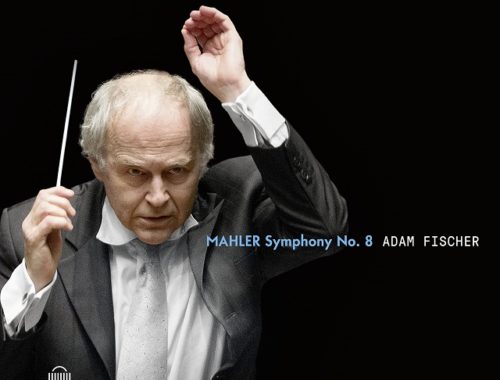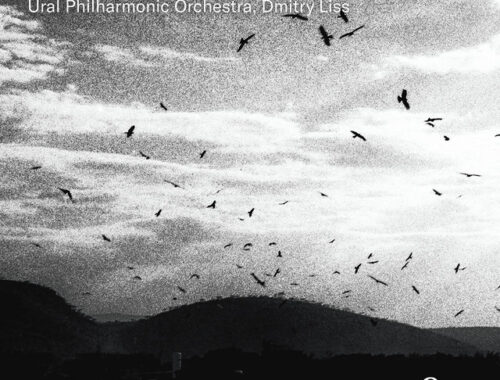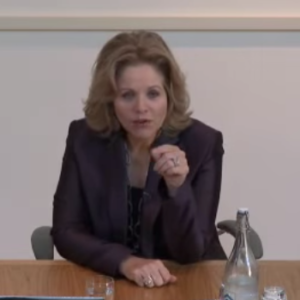Wagner “Parsifal”, English National Opera, London Coliseum
One of the great operatic images of the last two decades or so comes in the final act of Nikolaus Lehnhoff’s 1999 staging of Wagner’s last opera Parsifal. It is journey’s end for the fool made wise through pity and at the end of the line – quite literally here a disused railway track – the wandering hero returns, a black Samurai knight, silent, stealthy, mystical. The ritual in Lehnhoff’s staging is deliberately stark and alien, recognisably Christian symbols are avoided, as is beauty. His staging is the grey of guilt and despair, sin and sorrow. The Sanctuary of the Holy Grail is crumbling, its occupants dusty and dispirited. Some might call this the Protestant Parsifal. But even as string basses send a shiver of disquiet through the lofty prelude a more fundamental philosophy stirs: sin and redemption are universal.
And so the Temple of the Grail is a concrete fortress whose outer wall has been shattered by something akin to a crashing meteor. Is this the rock of ages, a Stanley Kubrick-like symbol of timelessness? When Gurnemanz, veteran of the Grail, and the pure fool Parsifal slowly process “though time and space” to the inner temple the rock tumbles with them and the upward sweep of Raimund Bauer’s set now offers the disorientating visual illusion of an aerial perspective. But grand ideas and their execution are not always compatible in the theatre and visible wires quickly remind us that technical complexity can be hazardous. The unveiling of the Grail – a creaky sliding panel opening awkwardly to a light that should blind us but does not – is quite the opposite: a feeble solution. Both ideas paradoxically show their age. Others – like the crash landing of Kundry as a fallen angel and the destruction of Klingsor’s domain in a shower of (nuclear?) ash – are simpler and more memorable.
But as with all special operatic experiences, the show is only as good as the people who inhabit it and as the first words of text cut through the silence of the auditorium we hear the stentorian voice of authority that could only belong to one man. Where would the history of Wagner performance be without John Tomlinson? His Gurnemanz carries with it the weight of experience and tradition that this chronicler of Grail history must naturally have in abundance. We hang on his every word and gesture. Who else could invest the line “It is forbidden” with such finality?
In marked contrast, the Kundry of Jane Dutton has us glazing over during her lengthy act two narration. One begins to wonder if the flat toneless delivery is deliberate? But thereafter she rises to the fireworks surrounding the problematic “kiss” and the revelation of how she mocked Christ on the Cross culminates in a no holds barred vocal plunge that is the ultimate fall from grace in music. Stuart Skelton’s Parsifal comes into dramatic focus here, too, his awakening to the purpose of his mission big in sound and conviction.
But his best is still to come. Everyone’s is. All games are raised in the final act. After the somewhat sexless flouncings of the stamen waving flower maidens in act two, act three is properly glorious. Mark Wigglesworth and the ENO orchestra, magnificent throughout the evening, now achieve a truly rarefied beauty, strings whispering a barely audible benediction before the solo oboe announces the new dawn.
Lehnhoff’s blocking of the final scene is tremendous and the image of Skelton’s Parsifal finally granting peace to Iain Paterson’s tortured Amfortas and gently closing his eyes is as simple and unforgettable here as Lehnhoff’s allusion to Michelangelo’s Pietà at the close of act one. Compassion is universal, too.
You May Also Like

GRAMOPHONE Review: Mahler Symphony No. 8 – Soloists, Choirs, Düsseldorf Symphony Orchestra/Fischer
01/01/2020
GRAMOPHONE Review: Shostakovich Symphony No. 10 – Ural Philharmonic Orchestra/Liss & New Philharmonia Orchestra/Sanderling
24/03/2023